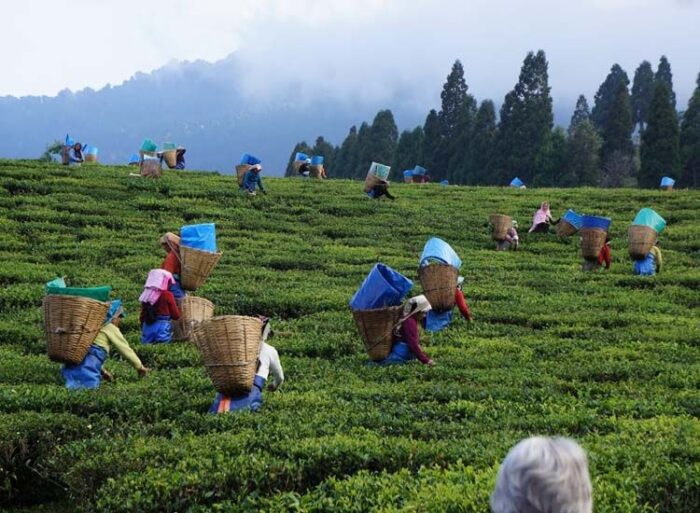
File Picture
Farm reforms is a generic term and covers all reform measures designed to improve the productivity of agriculture, income and well being of the farmers and the rural communities. It includes therefore reforms in land relations in a broad sense– tenurial arrangements, terms and conditions of tenancy and norms of land use as much as credit, supply of inputs, marketing, storage and processing of agricultural and horticultural produce. From this perspective, the three Farm Acts enacted in the last year by the Central Government- the Farmers Produce Trade and Commerce (Promotion and Facilitation) Act, the Farmers ( Empowerment and Protection) Agreement on Price Assurance and Farm Services Act, and the Essential Commodities Amendment Act relate mainly to trade ,marketing, and storage of farm Produce, and facilitation of contract farming as a step to raise productivity of crops by induction of private capital, technology , market access and thus farm incomes.
Agriculture primarily refers to cultivation of seasonal cereal crops such as rice, wheat,coarse grains,millets, oilseeds and vegetables ;though in a broad sense it includes horticulture, vegetable crops, plantation crops like jute and sugarcane, dairy farming and poultry but not Tea or coffee plantations. The scope of the aforementioned farm laws is therefore broad as trade begins only after the farmers sell their surplus grains. The current debate on this subject however, is mainly about implications of these 3 laws for grain trade in Northern states of Punjab, Haryana and Western UP, the primary source of state procurement of Rice and wheat in the country.
From ” procurement” angle, North East states don’t really matter as only 2.11 lakh and 0.14 lakh MT of rice were procured in 2019-20 by the FCI from Assam and Tripura respectively even when the Markets- (Mandis in Hindi) set up under the respective State APMC Acts were functioning — 20 Primary Marketing Yards , 206 Sub Marketing Yards and 24 Regulated Markets in Assam. This low procurement of Rice even when Assam and Tripura produced in 2017-18 51.60 lakh MT and 7. 12 lakh MT respectively suggests that there is little marketable surplus as much of the rice is consumed and processed at the house holds for making parched rice etc. (Assam produce now about 5.5 to 6 million MT of Rice) . Productivity of rice per hect is high as for example Manipur’s productivity of 2228kg/hect is 14% above the national average even when Manipur’s rice output has been about 4.10lakh MT only. This holds good for Assam ,Tripura and even West Bengal ,the largest Rice producing state but the FCI procured only 18.38 lakh MT from Bengal in 2019-20. Diversification of cereal crops production didn’t take place despite efforts made in 1972-73 in Assam under the Emergency Agricultural Production program ably led by R.Natarajan, the then Agriculture Secretary Assam as the area under wheat in Assam has actually declined from 0.05 Million ha in 2013-14 to 0.02 million ha in 2017-18.
It’s thus clear that the issues which led to the ongoing farmers agitation in Punjab- Haryana- Western UP such as importance of procurement at the Minimum Support Price and hence the demand for” legalizing MSP based assured procurement “are not seen as critical by the farmers in the north east, because (a) the farm holdings are overwhelmingly in ” small and marginal category ” generating little surplus and (b) selling the small surplus to the traders in private local Markets run by the panchayats or local bodies is commonly done. Even the APMC markets are not preferred by many farmers which is unlikely to change.
This however does not mean that the Farm Reforms laws have no relevance as measures such as contract farming, induction of private capital and technology both for facilitating trade, storage and Processing as provided therein are already being adopted in the region, albeit, imperfectly which suggest both the need and scope for improvement in the same.
Contract farming is not new in the North East. Section 2(5) of Tripura APMC (Amendment) Act 2007 defined it as “farming by a person called Contract farming Producer under a written agreement with another person called Contract farming sponsor to the effect that his farm produce shall be purchased as specified in the Agreement”. Under this law, “Contract farming Producer” means an individual agriculturist or association of agriculturists whatever name called registered under any law for the time being in force.” Thus a farmers cooperative under the Coop law is eligible but not informal groups like the Self Help groups which introduces some rigidity; and this needs change to spread contract farming covering a wide of farming activities for which north east has huge potential. These are horticultural produce like orange, pineapple, Strawberries, medicinal plants, spices like Large Cardamom, Turmeric apart from Tea and Coffee which are already being grown under informal contract farming arrangements- especially Tea in small plots all over the region. These efforts need formalisation under a statue and policy support to enable the producers to get not only fair price but sustained capital, technology, and infrastructure support to raise farm incomes. There is thus need for state laws balancing the interest of the producers/ farmers and the companies involved in the contract farming taking into account the state specific ground situation. In Hill states average holdings are larger than in Assam plains because the land is community owned and allotted only to those interested in growing a certain crop- seasonal or horticultural including tea and coffee or spices who might need technical support from the concerned Commodity Boards as for example Tea Board for tea or Spice Board for spices. In Assam where a farmer holds only rights of a lease holder from the government, lands of only those who hold 30 years lease- Myadi pattas in land revenue legal terms can enter into a contract farming arrangements.
In this connection it would be relevant to look at the last three decades’ experience of Assam , Tripura and other Hill states in Small Tea cultivation having some features of contract farming which, if given institutional support as envisaged under the Farm Reforms laws might be a game changer for development of agri- horticultural and plantation sector of the region. Presently the Tea growers raise the plantations at their own cost for sale at negotiated prices of their produce of ” bought leaves” either at the Tea estates factories in the organised sector or at ” Bought leaf factories”( there are 272 such factories in Assam) run only for processing and selling at the Tea Auction centre. In either case the growers who typically own on an average 2 acres of land are not organised as yet either as cooperatives or Self Help groups or NGO and are wholly dependent on the buyers. However as it serves the interest of the Tea industry or the independent Tea factory because they get steady supply of quality Tea leaves ready for processing without having to incur cost of growing a labor intensive crop like Tea which requires regular treatment that only labor could provide. For these reasons “Small Tea cultivation” has spread across the NE as a viable enterprise especially in Assam where about 1.50 lakh growers have put about 81000 hectares under Tea- mostly in upper Assam. As of now,42.17% of Assam’s tea output of 676.31 Million kg, 23.8% of Tripura’s Tea Production of 8.72mkg, and 68.37% 80.85%and 100% of tea leaves produced in plantations in Arunachal, Meghalaya and Nagaland are under the” Small Tea” sector which has come to stay because the farmers find it more remunerative than seasonal crops even when they face a buyer’s market without any formal contract. The Small Tea sector is now a dynamic segment of the tea industry not only in the North East but also in West Bengal as 53.65% of total Production of 180 M kg is produced from tea leaves in small Tea sector.
We must note that this success is primarily due to the ease with which the small growers could forge links with the organised Tea industry for mutual benefit. This could be further improved under a formal contract farming agreement for which the measures under the Farm Reforms laws appear to be practical as it relates more to land use and hence a land revenue administration matter that is best left to the District Collectors and SDOs.
The huge potential of the Hills and Plains of north east in Tea, Coffee , Rubber and horticultural crops not only due to agro-climatic situations but also land laws which even in the tribal areas could facilitate group farming and value addition activities suggest the need for a multi pronged contract farming strategy for the north east with Farmers Producers companies (FPO ) as its main plank. This will be in line with the national policy to put in place 1000 FPOs and an Agri-infrastructure fund of Rs 1 lakh crores which could be accessed to develop storage, processing and marketing facilities for the FPOs and the state nodal agencies. As these initiatives have to be necessarily mounted with a regional perspective , North Eastern Council as the statutory body responsible for Regional planning has an important role in coordinating contract farming development programs for ensuring success on durable basis.
[the_ad id=’22722′]


















